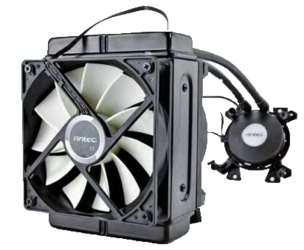- Joined
- May 26, 2015
- Location
- California
I'm building a new FX-8320 box and when getting the parts at Fry's I saw what seemed like a great price for this unit, US$33 after Antec rebate.
I'm still waiting to choose and get the motherboard and RAM, but I'm trying to get everything else staged and ready to move on this build when I do.
Looking around, I'm seeing a few reported problems with this unit's controllers going bad and the Grid software acting up -- plus I'm seeing contradictory instructions about how to properly install it. I'm assuming that improper installation and config may be the root of these problems.
I don't want any more surprises from this thing. Finding out that it won't fit in the Antec Three Hundred Two case I bought with it unless I pull and discard the nice 130mm top fan is my limit.
OS will be Win7/64.
What I know (?) so far:
Microsoft .NET Framework must be installed...
Control lead must be correctly attached to an internal USB2 socket on the motherboard...
"Q-Fan" must be disabled in the BIOS...
There are apparently different and contradictory power connection theories. One article I read said to NOT connect the unit to the usual CPU_FAN socket on the motherboard, but to run it on straight 12V from an adapter connected to an IDE socket off the PSU (I actually have some of these fan adapters).
What? This a lot more rigmarole than I expected from a cooler.
This a lot more rigmarole than I expected from a cooler.
If anyone's been able to set this thing up and have it work properly with no early failures, I'd be grateful for any help!
Thanks!

I'm still waiting to choose and get the motherboard and RAM, but I'm trying to get everything else staged and ready to move on this build when I do.
Looking around, I'm seeing a few reported problems with this unit's controllers going bad and the Grid software acting up -- plus I'm seeing contradictory instructions about how to properly install it. I'm assuming that improper installation and config may be the root of these problems.
I don't want any more surprises from this thing. Finding out that it won't fit in the Antec Three Hundred Two case I bought with it unless I pull and discard the nice 130mm top fan is my limit.
OS will be Win7/64.
What I know (?) so far:
Microsoft .NET Framework must be installed...
Control lead must be correctly attached to an internal USB2 socket on the motherboard...
"Q-Fan" must be disabled in the BIOS...
There are apparently different and contradictory power connection theories. One article I read said to NOT connect the unit to the usual CPU_FAN socket on the motherboard, but to run it on straight 12V from an adapter connected to an IDE socket off the PSU (I actually have some of these fan adapters).
What?
If anyone's been able to set this thing up and have it work properly with no early failures, I'd be grateful for any help!
Thanks!

 to OCFs.
to OCFs.